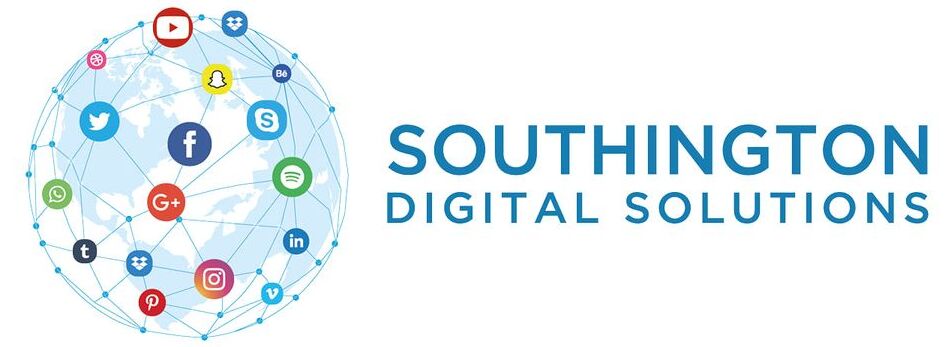The Importance of SEO Optimization for Websites in 2024
Why SEO Optimization is Crucial for Your Website’s Success in 2024, In today’s digital age, having a strong online presence is crucial for any business. Search Engine Optimization (SEO) plays a vital role in ensuring that your website is visible to potential customers. SEO is the practice of optimizing your website to rank higher in search engine results, making it easier for people to find you. With Google’s latest algorithm updates, focusing on SEO has become even more important. This guide will help you understand why SEO is essential, how it works, and what you can do to improve your website’s performance.
Understanding Google’s March 2024 Algorithm Update
Google frequently updates its search algorithms to provide the best possible results for users. The March 2024 core update introduced several significant changes aimed at improving search quality and reducing spammy content. Here are the key points:
Content Quality
Google’s Latest Update: Emphasizing High-Quality, Original Content
In its ongoing efforts to improve user experience and provide the most relevant search results, Google has rolled out a significant update to its search algorithm. This update places a strong emphasis on high-quality, original content, fundamentally changing the landscape for website owners and content creators.
Prioritizing Quality Over Quantity
One of the key aspects of this update is the prioritization of quality over quantity. Google aims to reward websites that produce well-researched, insightful, and valuable content. This shift is designed to enhance the user’s search experience by ensuring that the information they find is not only relevant but also genuinely helpful and informative.
The Downfall of Low-Quality, Unoriginal Content
Websites that have relied on low-quality, unoriginal content are likely to face penalties under this new algorithm. Duplicate content, spun articles, and keyword-stuffed pages that do not provide real value will be demoted in search rankings. This move is part of Google’s broader strategy to eliminate spammy, irrelevant content from its search results, making it easier for users to find trustworthy and authoritative information.
The Rise of Human-Made Content
The algorithm now gives preferential treatment to content that is human-made. This means content crafted with care, understanding, and a genuine intent to educate or inform the audience. Automated content generation tools and practices that churn out generic or superficial articles will find it increasingly difficult to maintain visibility on Google’s search engine results pages (SERPs).
Creating Real Value for Users
At the heart of this update is the concept of providing real value to users. Content that addresses the needs, questions, and interests of the audience will be rewarded. This includes how-to guides, in-depth articles, and comprehensive analyses that offer practical insights and solutions. Websites that can consistently deliver such high-quality content are more likely to build trust and authority, resulting in better search rankings and increased organic traffic.
Adapting to the New Standards
For businesses and content creators, adapting to these new standards is crucial. It’s no longer sufficient to simply produce content; the focus must be on creating exceptional, original content that stands out and serves the user’s intent. Investing time in understanding your audience, conducting thorough research, and presenting information in a clear and engaging manner will be key to thriving in this new SEO environment.
Conclusion
Google’s latest update underscores the importance of high-quality, original content in the digital landscape. By prioritizing content that is helpful, human-made, and valuable to users, Google aims to create a better search experience. For website owners, this means a renewed focus on quality and authenticity, ensuring that their content meets the evolving standards of the world’s leading search engine.
(Search Engine Land) (Search Engine Journal).
 User Experience (UX)
User Experience (UX)
The Update Also Highlights the Importance of User Experience
Google’s latest algorithm update not only emphasizes high-quality, original content but also underscores the critical importance of user experience (UX). This means that to rank well in search results, websites must go beyond just offering valuable content; they must also provide a seamless and enjoyable browsing experience for users.
Fast Loading Times
One of the key aspects of a positive user experience is fast loading times. In today’s fast-paced digital world, users expect web pages to load almost instantly. Slow-loading pages frustrate visitors and increase the likelihood of them leaving the site before it fully loads, leading to higher bounce rates. Google recognizes this and now favors websites that load quickly. To optimize your site’s loading speed, consider compressing images, enabling browser caching, and reducing server response times. Tools like Google PageSpeed Insights can help identify areas for improvement.
Mobile-Friendliness
Another crucial factor in user experience is mobile-friendliness. With the majority of internet users accessing websites via mobile devices, it is imperative that websites are optimized for mobile viewing. Google’s mobile-first indexing means that the mobile version of your website is considered the primary version. A mobile-friendly website adapts to different screen sizes and resolutions, providing a smooth and intuitive user experience regardless of the device used. Ensuring your website is responsive and easily navigable on smartphones and tablets will not only improve user satisfaction but also enhance your search engine rankings.
Easy Navigation
User experience is also heavily influenced by how easy it is to navigate a website. Websites with clear, intuitive navigation help users find the information they need quickly and effortlessly. This includes having well-organized menus, clear calls-to-action, and a logical layout. Users should be able to move through your site without confusion or unnecessary clicks. Improving site navigation not only enhances the user experience but also makes it easier for search engines to crawl and index your pages, contributing to better SEO performance.
Engaging and Accessible Design
Beyond speed and navigation, the overall design and accessibility of your website play a significant role in user experience. An engaging design with visually appealing elements can captivate users and keep them on your site longer. Additionally, accessibility features such as alternative text for images, keyboard-friendly navigation, and text-to-speech capabilities ensure that all users, including those with disabilities, can effectively use your site. Google values inclusive design and may rank accessible websites higher in search results.
Conclusion
The emphasis on user experience in Google’s latest update highlights the need for websites to be not only informative but also user-friendly. Fast loading times, mobile-friendliness, easy navigation, and engaging, accessible design are all critical components of a positive user experience. By optimizing these aspects, you can enhance your website’s performance, improve user satisfaction, and achieve better search engine rankings. Focusing on both high-quality content and superior user experience will ensure that your site meets the evolving standards of Google’s search algorithm and provides real value to your visitors.
(Search Engine Journal) (Search Engine Journal).
Spam Policies
Google’s New Spam Policies to Tackle Manipulative Practices
In its continuous effort to maintain the integrity of its search results, Google has introduced new spam policies aimed at tackling manipulative practices that undermine the quality of content on the web. These policies specifically target scaled content abuse, expired domain abuse, and site reputation abuse. The overarching goal is to eliminate low-value content that is created solely to manipulate search rankings, ensuring that users receive high-quality, relevant information.
Targeting Scaled Content Abuse
Scaled content abuse involves the mass production of low-quality content designed to game the search engine rankings. This practice often includes the creation of numerous pages with little to no unique value, using automated tools to generate content quickly and at scale. Google’s new policies are set to crack down on this by identifying patterns of repetitive and superficial content. Websites engaging in such practices will face penalties, including lower search rankings or complete removal from search results. The emphasis is now on producing well-crafted, original content that genuinely serves the user’s needs.
Combating Expired Domain Abuse
Expired domain abuse is another manipulative practice that Google’s new policies aim to address. This tactic involves acquiring expired domains that previously had high authority and traffic, and then repurposing them to promote unrelated or low-quality content. By leveraging the existing backlinks and reputation of these expired domains, manipulators attempt to boost the visibility of their new, often irrelevant content. Google’s updated spam policies will more effectively detect and penalize such activities, ensuring that the historical credibility of a domain does not unfairly influence current search rankings.
Addressing Site Reputation Abuse
Site reputation abuse refers to the exploitation of a website’s established reputation to boost the rankings of low-quality or deceptive content. This can involve tactics such as cloaking, where different content is shown to users and search engines, or the insertion of spammy links and hidden text. Google’s new policies are designed to safeguard the integrity of site reputations by identifying and penalizing these deceptive practices. Websites found engaging in site reputation abuse will see their rankings diminish, and in severe cases, may be removed from search results entirely.
The Goal: Removing Low-Value Content
The primary objective of these new spam policies is to remove low-value content that is created solely to manipulate search rankings. Such content does not provide genuine value to users and detracts from the overall quality of information available on the web. By targeting manipulative practices, Google aims to ensure that the content featured in its search results is relevant, high-quality, and trustworthy. This not only improves the user experience but also upholds the integrity of Google’s search platform.
Encouraging Ethical SEO Practices
With the implementation of these stringent spam policies, Google encourages website owners and content creators to adopt ethical SEO practices. This includes focusing on producing original, valuable content, building natural backlinks, and maintaining transparent and user-friendly websites. By adhering to these best practices, websites can improve their search rankings in a legitimate manner and contribute to a healthier, more informative web ecosystem.
Conclusion
Google’s introduction of new spam policies marks a significant step in combating manipulative SEO practices. By targeting scaled content abuse, expired domain abuse, and site reputation abuse, these policies aim to remove low-value content designed solely to manipulate search rankings. For website owners and content creators, this underscores the importance of adhering to ethical practices and focusing on creating high-quality, user-centric content. Ultimately, these measures will lead to a better search experience for users, providing them with relevant and trustworthy information.
(Search Engine Land) (WarmLeads).
The Critical Role of SEO Optimization
The Essential Role of SEO Optimization
SEO (Search Engine Optimization) is a critical component of digital marketing strategy for any business with an online presence. It involves various techniques and practices aimed at improving a website’s visibility on search engine results pages (SERPs). Here are several key reasons why SEO optimization is essential:
Improving Website Visibility
One of the primary goals of SEO is to enhance the visibility of your website. When your website ranks higher on search engine results pages, it becomes more noticeable to users who are searching for relevant keywords and phrases. This increased visibility leads to more organic traffic, as users are more likely to click on the top results that appear on the first page. Effective SEO techniques, such as keyword optimization, quality content creation, and strategic link building, can significantly boost your website’s rankings, making it easier for potential customers to find your business online.
Enhancing User Experience
SEO is not just about pleasing search engines; it is also about creating a positive experience for users. A well-optimized website is designed to be user-friendly, with fast loading times, easy navigation, and mobile compatibility. These elements are crucial for keeping visitors engaged and reducing bounce rates. When users have a positive experience on your site, they are more likely to stay longer, explore more pages, and ultimately convert into customers. By focusing on SEO, you can ensure that your website meets the highest standards of usability, leading to increased satisfaction and engagement from your audience.
Building Credibility and Trust
Higher search engine rankings often translate to greater credibility and trustworthiness in the eyes of users. Websites that appear on the first page of search results are generally perceived as more authoritative and reliable. SEO helps build this credibility by optimizing your site for relevant keywords, earning quality backlinks from reputable sources, and producing high-quality content that addresses the needs and questions of your audience. Over time, these efforts contribute to a stronger online reputation, making your brand more recognizable and trustworthy.
Providing a Long-Term Strategy for Traffic Growth
Unlike paid advertising, which can deliver quick results but requires ongoing investment, SEO offers a sustainable and cost-effective strategy for long-term traffic growth. While it may take time to see significant improvements in your search rankings, the benefits of SEO are cumulative and enduring. Once your website achieves higher visibility, it continues to attract organic traffic without the need for continuous expenditure. By consistently applying best practices in SEO, you can maintain and even improve your rankings over time, ensuring a steady flow of visitors to your site.
Adapting to Changing Algorithms
Search engines, particularly Google, frequently update their algorithms to improve the quality of search results. Staying on top of these changes and adapting your SEO strategies accordingly is crucial for maintaining your rankings. This means regularly updating your content, optimizing for new keywords, and ensuring your website complies with the latest technical requirements. By keeping your SEO efforts current, you can stay ahead of competitors and continue to attract organic traffic despite algorithm changes.
Measuring and Analyzing Performance
SEO also provides valuable insights into your website’s performance through various metrics and analytics. Tools like Google Analytics and Search Console offer data on traffic sources, user behavior, and keyword performance, allowing you to assess the effectiveness of your SEO strategies. By analyzing this data, you can identify areas for improvement, refine your approach, and make informed decisions that enhance your site’s performance and user experience.
Conclusion
SEO optimization is essential for improving your website’s visibility, enhancing user experience, building credibility, and providing a long-term strategy for traffic growth. By investing in SEO, you can ensure that your website remains competitive in the digital landscape, attracting more visitors and converting them into loyal customers. The ongoing benefits of SEO make it a vital component of any successful digital marketing strategy.
Improved Visibility and Rankings
SEO: Boosting Your Website’s Visibility and Driving Potential Sales
Search Engine Optimization (SEO) is a powerful tool that can significantly enhance your website’s presence on the internet. By optimizing various aspects of your site, SEO helps it appear higher in search engine results pages (SERPs), which has numerous benefits for your business.
Achieving Higher Rankings in SERPs
The primary objective of SEO is to improve your website’s ranking in SERPs. When users enter search queries related to your business, products, or services, search engines like Google use complex algorithms to determine which websites appear at the top of the results. SEO techniques, such as keyword optimization, quality content creation, and link building, help align your website with these algorithms, boosting its ranking. The higher your site appears in the results, the more likely it is that users will click on it.
Increased Visibility
Higher rankings directly translate to increased visibility. Most users tend to click on the top results displayed on the first page of search results. Studies show that the majority of clicks go to the top three results, with significantly fewer clicks on subsequent pages. By achieving a top position in SERPs, your website becomes more visible to a larger audience, increasing the likelihood that potential customers will find your business. This heightened visibility is crucial for attracting new visitors and expanding your customer base.
Driving More Traffic
With increased visibility comes more traffic. When your website ranks higher and is more easily found by users, you can expect a significant increase in the number of visitors. This influx of traffic is not just random; it consists of individuals actively searching for the products or services you offer. This targeted traffic is more likely to convert into leads or sales, as these users already have an interest in what your business provides. SEO ensures that your website attracts relevant and high-quality traffic, boosting your chances of conversion.
Potential for Increased Sales
The ultimate goal of any business is to generate sales, and SEO plays a crucial role in achieving this. By driving more targeted traffic to your website, SEO increases the potential for sales. When users find your website easily and have a positive experience navigating it, they are more likely to make a purchase. High-quality content, optimized product descriptions, and user-friendly design are all part of an effective SEO strategy that can lead to higher conversion rates. Furthermore, the trust and credibility gained from appearing at the top of search results can enhance your brand’s reputation and encourage more sales.
Enhancing User Experience
SEO is not just about rankings and traffic; it also focuses on improving the overall user experience. A well-optimized website is fast, mobile-friendly, and easy to navigate. These factors contribute to a positive experience for visitors, making them more likely to stay on your site longer and engage with your content. A better user experience can lead to higher customer satisfaction and loyalty, ultimately driving more sales and fostering long-term relationships with your customers.
Building Long-Term Success
SEO is a long-term strategy that builds sustainable success for your business. While it may take time to see significant results, the benefits of SEO are enduring. Once your website achieves higher rankings, it continues to attract organic traffic without the need for ongoing paid advertising. Consistently applying SEO best practices ensures that your site remains competitive and relevant, adapting to changes in search engine algorithms and user behavior. This long-term approach helps secure a steady flow of visitors and potential sales, contributing to the overall growth and success of your business.
Conclusion
SEO helps your website appear higher in search engine results pages (SERPs), leading to increased visibility and a greater chance that potential customers will find your business. This heightened visibility drives more traffic to your site, providing opportunities for increased sales and business growth. By investing in SEO, you can enhance your website’s performance, attract targeted traffic, and achieve long-term success in the digital marketplace.
(Search Engine Land) (Search Engine Journal).
Increased Credibility and Trust
Building Credibility and Trust Through SEO
Achieving high rankings on Google is not just about visibility and traffic; it also significantly impacts your website’s credibility and trustworthiness. Websites that rank well on Google are often perceived as more credible and reliable by users. By following SEO best practices, you can build authority in your niche and gain the trust of your audience, leading to higher engagement and conversion rates.
Perception of Credibility
When users search for information, products, or services, they tend to trust the results that appear at the top of Google’s search pages. These top-ranked websites are viewed as more credible because Google’s algorithms are designed to prioritize high-quality, relevant content. A website that consistently ranks well signals to users that it is an authoritative source in its field. This perception of credibility is crucial for attracting and retaining visitors, as users are more likely to engage with and purchase from a website they trust.
Building Authority in Your Niche
SEO best practices involve creating high-quality content, earning backlinks from reputable sources, and optimizing your website for relevant keywords. These strategies help establish your site as an authority in your niche. High-quality content demonstrates your expertise and provides value to your audience, while backlinks from trusted sites further enhance your credibility. By consistently delivering valuable information and maintaining a strong online presence, your website can become a go-to resource for users, solidifying your authority in your industry.
Gaining Audience Trust
Trust is a fundamental component of building a loyal audience and achieving high conversion rates. When users trust your website, they are more likely to engage with your content, sign up for newsletters, and make purchases. SEO helps build this trust by ensuring your website meets high standards of quality and relevance. User-friendly design, fast loading times, and secure connections (HTTPS) all contribute to a positive user experience, reinforcing the trustworthiness of your site. Additionally, transparent practices, such as clear privacy policies and accurate contact information, further build user confidence.
Higher Engagement Rates
A credible and trustworthy website naturally sees higher engagement rates. When users find your content useful and reliable, they are more likely to spend time on your site, explore multiple pages, and interact with your content. This increased engagement can be measured through metrics such as lower bounce rates, higher average session durations, and more page views per visit. Engaged users are also more likely to share your content on social media, write positive reviews, and recommend your site to others, amplifying your reach and authority.
Boosting Conversion Rates
Trust and credibility play a direct role in boosting conversion rates. When users perceive your website as a reliable source, they are more inclined to take desired actions, such as filling out contact forms, signing up for services, or making purchases. High rankings in search results combined with a strong reputation can significantly influence user decision-making. By implementing SEO best practices, you ensure that your website not only attracts visitors but also converts them into customers. The trust built through credible content and positive user experiences translates into higher conversion rates and increased revenue.
Long-Term Benefits
The benefits of building credibility and trust through SEO are long-term. Once established, a strong reputation continues to attract new visitors and retain existing ones. Maintaining high rankings through ongoing SEO efforts ensures that your website remains visible and authoritative in your niche. This sustained visibility and trust lead to a virtuous cycle of higher engagement, more conversions, and greater overall success for your business.
Conclusion
Websites that rank well on Google are often seen as more credible and trustworthy. By following SEO best practices, you can build authority in your niche and gain the trust of your audience. This increased credibility leads to higher engagement rates and boosts conversion rates, driving the long-term success of your business. Investing in SEO not only improves your search rankings but also establishes a strong foundation of trust and authority that benefits your website for years to come.
(Search Engine Journal) (WarmLeads).
 Long-Term Strategy
Long-Term Strategy
The Long-Term Benefits of SEO Compared to Paid Advertising
In the realm of digital marketing, both SEO (Search Engine Optimization) and paid advertising are essential strategies for driving traffic and increasing visibility. However, SEO offers unique long-term benefits that set it apart from paid advertising. Unlike paid ads, which stop delivering results once you stop paying, SEO provides enduring advantages. Consistently high rankings can bring a steady stream of organic traffic over time, making it a cost-effective marketing strategy.
Sustainable Results
One of the primary advantages of SEO is its sustainability. While paid advertising delivers immediate results by placing your ads at the top of search results or on popular websites, the traffic and visibility cease as soon as the ad campaign ends. In contrast, SEO efforts build a foundation that continues to drive traffic long after the initial optimization work is done. By consistently applying SEO best practices, your website can maintain high rankings in search engine results pages (SERPs), ensuring a continuous flow of organic traffic without ongoing expenditure.
Cost-Effective Marketing
SEO is inherently cost-effective compared to paid advertising. While both strategies require an initial investment, the long-term benefits of SEO can outweigh the recurring costs associated with paid ads. Once your website achieves high rankings, the organic traffic it generates does not incur additional costs per click or impression. This contrasts with paid advertising, where you must continually invest money to maintain visibility. Over time, the return on investment (ROI) from SEO can be significantly higher, as the cost per acquisition decreases with sustained organic traffic growth.
Building Authority and Trust
SEO helps establish your website as an authoritative and trustworthy source in your niche. High-quality content, relevant keywords, and valuable backlinks contribute to your site’s credibility and reputation. This trust is built over time and cannot be easily replicated through paid advertising. Users are more likely to trust and engage with websites that rank organically due to their perceived reliability. This increased trust leads to higher engagement rates, better customer retention, and more word-of-mouth referrals, all of which contribute to long-term success.
Adaptability and Resilience
SEO is adaptable and resilient to changes in the digital landscape. Search engine algorithms evolve, and SEO strategies must be updated accordingly. However, the core principles of providing valuable content, optimizing for user experience, and earning quality backlinks remain constant. This adaptability ensures that your SEO efforts continue to pay off even as the online environment changes. In contrast, paid advertising strategies may require frequent adjustments and increased budgets to stay competitive, especially as ad costs fluctuate and user behavior shifts.
Consistent Organic Traffic
High rankings in SERPs result in consistent organic traffic. Users searching for relevant keywords are more likely to find and visit your website. This steady stream of visitors provides numerous opportunities for engagement, lead generation, and conversions. Organic traffic is often more valuable than paid traffic because it consists of users actively seeking information, products, or services related to your business. This intent-driven traffic is more likely to result in meaningful interactions and sales, contributing to long-term growth.
Measurable and Trackable Results
SEO provides measurable and trackable results, allowing you to assess the effectiveness of your strategies and make data-driven decisions. Tools like Google Analytics and Search Console offer insights into your website’s performance, including traffic sources, user behavior, and keyword rankings. By analyzing this data, you can identify areas for improvement, optimize your content and technical aspects, and refine your SEO approach. This ongoing optimization ensures that your website remains competitive and continues to attract organic traffic.
Conclusion
Unlike paid advertising, which stops delivering results once you stop paying, SEO provides long-term benefits. Consistently high rankings can bring a steady stream of organic traffic over time, making SEO a cost-effective marketing strategy. The sustainable results, cost-effectiveness, authority building, adaptability, consistent organic traffic, and measurable outcomes make SEO an invaluable component of your digital marketing efforts. By investing in SEO, you can achieve lasting visibility, trust, and growth for your business.
(Search Engine Land) (Search Engine Journal).
Integrating Social Media into Your SEO Strategy
Social media and SEO (Search Engine Optimization) are closely linked, and integrating the two can significantly enhance your overall marketing efforts. Leveraging social media platforms can boost your SEO in several ways, driving more traffic to your site, building valuable backlinks, increasing brand awareness, and facilitating engagement and feedback. Here’s how social media can enhance your SEO strategy:
Driving Traffic
Sharing your content on social media platforms can drive significant traffic to your website. When users click on links to your site from social media posts, these visits send positive signals to search engines, indicating that your site is popular and relevant. Increased traffic from social media can lead to higher rankings in search engine results pages (SERPs) as search engines perceive your content to be valuable and engaging. Moreover, social media platforms like Facebook, Twitter, LinkedIn, and Instagram provide diverse audiences and opportunities to reach potential customers who may not have discovered your site through search engines alone.
Building Backlinks
Social media profiles can serve as powerful platforms for earning backlinks. When your content is shared and referenced by others on social media, it increases your site’s authority and improves its SEO performance. Backlinks from reputable sources are a crucial factor in search engine algorithms, signaling to search engines that your content is trustworthy and valuable. As your content is shared across social media, it has the potential to be picked up by bloggers, journalists, and influencers, who may link back to your site from their own content. This not only drives referral traffic but also boosts your site’s credibility and authority.
Brand Awareness
Active social media profiles help build your brand’s presence online. Consistent branding across social media and your website reinforces your identity and can improve click-through rates from search results. When users recognize your brand in search results, they are more likely to click on your link, increasing your site’s organic traffic. Social media allows you to showcase your brand’s personality, values, and voice, making it easier for users to connect with and remember your brand. Regularly posting engaging content, participating in conversations, and using branded hashtags can strengthen your online presence and make your brand more recognizable.
Engagement and Feedback
Social media platforms provide a space for engaging with your audience and receiving valuable feedback. This interaction can help you understand your customers’ needs, preferences, and pain points, allowing you to adjust your SEO strategy accordingly. Responding to comments, messages, and reviews on social media demonstrates that you value customer feedback and are committed to improving their experience. This engagement can foster loyalty and trust, encouraging users to visit your website and engage with your content. Additionally, insights gained from social media interactions can inform your content creation, helping you produce more relevant and targeted material that resonates with your audience.
Enhancing Content Distribution
Social media is an effective channel for distributing your content to a broader audience. By sharing blog posts, articles, videos, and other content on social media, you increase its reach and visibility. Social media platforms allow you to target specific demographics, interests, and behaviors, ensuring that your content reaches the right audience. The increased exposure can lead to more social shares, likes, and comments, amplifying your content’s impact and driving more traffic to your website. Utilizing features like hashtags, tagging, and collaborations with influencers can further enhance your content distribution efforts.
Improving Local SEO
Social media can also play a role in improving your local SEO efforts. Local businesses can leverage social media platforms to connect with their community, share local news and events, and encourage customer reviews. Positive interactions and reviews on social media can enhance your local search visibility, making it easier for local customers to find your business. Creating and optimizing social media profiles with accurate business information, location tags, and local keywords can contribute to higher rankings in local search results.
Conclusion
Integrating social media into your SEO strategy offers numerous benefits, including driving traffic, building backlinks, increasing brand awareness, and fostering engagement and feedback. By leveraging the power of social media, you can enhance your overall marketing efforts, improve your search engine rankings, and create a more cohesive and effective digital presence. Embracing both SEO and social media strategies ensures that your content reaches a wider audience, drives more organic traffic, and ultimately contributes to the growth and success of your business.
 Leveraging Google Business Profiles for Local SEO
Leveraging Google Business Profiles for Local SEO
Google Business Profiles (formerly Google My Business) are essential for local SEO and improving your visibility in local search results. An optimized Google Business Profile can significantly enhance your online presence, making it easier for local customers to find and engage with your business. Here’s how to optimize your profile:
Complete Your Profile
A complete Google Business Profile ensures that all the necessary information about your business is available to potential customers. This includes your business name, address, phone number, website, and hours of operation. Having a complete profile helps Google accurately display your business information in search results, increasing your chances of being found by local customers. To optimize your profile:
- Business Name: Ensure that your business name is consistent across all online platforms. This consistency helps Google verify your business and improves your local search rankings.
- Address and Phone Number: Provide accurate and up-to-date contact information. This makes it easier for customers to reach you and for Google to display your location in local search results and on Google Maps.
- Website: Link to your official website to drive traffic and provide more information about your products or services.
- Hours of Operation: Keep your hours of operation current, including any special hours for holidays or events. Accurate hours help customers know when they can visit or contact your business.
Use Keywords
Incorporating relevant keywords into your business description and services can significantly improve your profile’s visibility in search results. Keywords help Google understand what your business is about, making it more likely to appear in searches related to your services. To optimize with keywords:
- Business Description: Craft a compelling business description that naturally includes relevant keywords. Focus on what makes your business unique and the services you offer.
- Services and Products: List all your services and products, including detailed descriptions and keywords. This not only helps with SEO but also provides valuable information to potential customers.
- Posts: Use keywords in your Google Business posts to highlight offers, events, and updates. Regularly posting keyword-rich content keeps your profile active and relevant.
Collect and Respond to Reviews
Encouraging satisfied customers to leave positive reviews on your Google Business Profile can enhance your online reputation. Reviews not only build trust with potential customers but also influence Google’s ranking algorithm. To optimize reviews:
- Encourage Reviews: Ask happy customers to leave reviews and provide them with a direct link to your Google Business Profile.
- Respond to Reviews: Responding to reviews, whether positive or negative, shows that you value customer feedback and are committed to improving your services. Positive engagement with reviews can boost your credibility and improve customer relationships.
- Manage Negative Reviews: Address negative reviews professionally and constructively. Apologize if necessary and offer solutions to resolve issues. This approach demonstrates your commitment to customer satisfaction and can mitigate the impact of negative feedback.
Post Regular Updates
Regular updates to your Google Business Profile keep your audience engaged and provide fresh content for Google to index. Posting about offers, events, and news related to your business ensures that your profile remains active and relevant. To optimize updates:
- Regular Posts: Share updates on special offers, new products or services, events, and important announcements. Regular posts keep your audience informed and engaged.
- Event Announcements: Promote events such as sales, workshops, or community involvement. Event posts can attract local customers and increase foot traffic.
- Visual Content: Use high-quality images and videos in your posts to capture attention and showcase your business. Visual content is more engaging and can lead to higher interaction rates.
Utilize Features and Insights
Google Business Profiles offer various features and insights that can help you optimize your presence and understand customer behavior. To leverage these features:
- Q&A Section: Use the Q&A section to answer common customer questions. This not only helps customers but also provides additional keyword-rich content for your profile.
- Insights: Regularly check the insights provided by Google to understand how customers find and interact with your profile. Use this data to refine your SEO and marketing strategies.
- Booking and Messaging: Enable booking and messaging features if applicable to make it easier for customers to schedule appointments or contact you directly.
Conclusion
Leveraging Google Business Profiles is crucial for local SEO and improving your visibility in local search results. By completing your profile, using relevant keywords, collecting and responding to reviews, and posting regular updates, you can enhance your online presence and attract more local customers. Utilizing the features and insights offered by Google Business Profiles can further optimize your strategy and drive business growth. Investing in your Google Business Profile is a cost-effective way to improve local SEO and ensure that your business stands out in local search results.(Search Engine Journal) (Search Engine Journal).
Struggling with Low Search Engine Rankings?
Is your business having trouble appearing in search results? Are potential customers unable to find you online? At Southington Digital Solutions, we understand the frustration of low visibility and poor SEO performance. Our expert SEO services are designed to solve these problems, helping you achieve higher search engine rankings and drive more organic traffic to your site.
Our Solution
Our comprehensive SEO strategy includes keyword research, on-page optimization, content creation, and backlink building. We ensure that your website meets all the latest SEO standards, improving its visibility and relevance to search engines like Google. With our tailored approach, we target the specific needs of your business, ensuring maximum impact and results.
The Results
By partnering with Southington Digital Solutions, you can expect:
- Increased Website Traffic: More visitors finding your site through improved search engine rankings.
- Enhanced Online Visibility: Your business will be more easily found by potential customers.
- Higher Engagement and Conversions: Improved user experience leads to more interactions and sales.
- Long-Term Growth: Sustainable SEO practices that continue to drive results over time.
Special Offer: Get 3 Months Free Growth Gear Inbox and AI Chatbot ($300 Value)
Sign up for our SEO services with a 6-month contract and receive 3 months of our Growth Gear Inbox and AI Chatbot for free—a $300 value! This offer is designed to further enhance your customer engagement and streamline your communication processes.
Don’t let poor SEO hold your business back. Contact Southington Digital Solutions today and start your journey towards higher search engine rankings and business growth.


